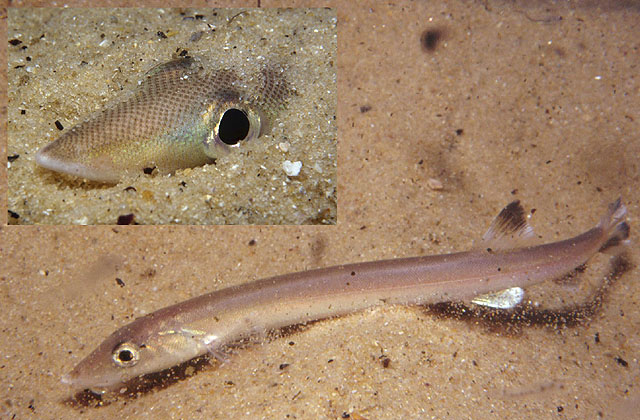| Gonorynchidae (Beaked salmons) |
| 60 cm TL (male/unsexed) |
|
demersal; marine; depth range 0 - 200 m |
| Southeast Atlantic: off southern Africa from the Skeleton Coast, Namibia round Cape of Good Hope to Natal, South Africa. Reported from Mozambique (Ref. 5213). Apart from the St. Helena, it has not been recorded elsewhere in the Atlantic. Western Pacific: Japan (Ref. 559), Chesterfield Islands (Ref. 11897), southern Australia and New Zealand (Ref. 4537). Eastern Pacific: Chile (Ref. 3975). |
|
Dorsal spines (total): 0-0; Dorsal soft rays (total): 11-12; Anal spines: 0-0; Anal soft rays: 8-9; Vertebrae: 62-63. Inside of mouth and gills purplish (Ref. 3975). Lower lip of mouth with elongated forked papillae. |
| Inhabits sandy bottoms along the shoreline (Ref. 5213) to depths of 200 m (Ref. 5755). Nocturnal, found buried in sand or mud during the day (Ref. 5755). Feeds on benthic and burrowing invertebrates (Ref. 5755). Pelagic young preyed upon by seabirds or found ashore during bad weather (Ref. 3975). Marketed fresh (Ref. 3411). |
|
Least Concern (LC); Date assessed: 10 July 2014 Ref. (130435)
|
| harmless |
Source and more info: www.fishbase.org. For personal, classroom, and other internal use only. Not for publication.

